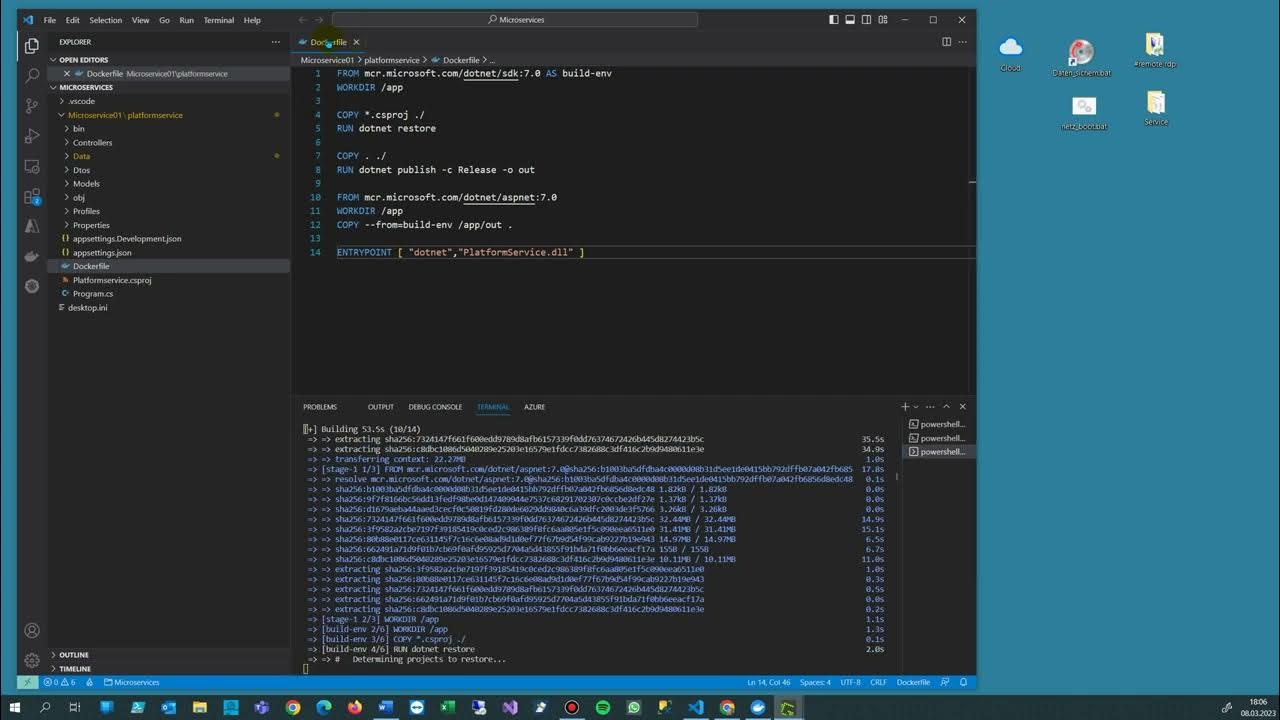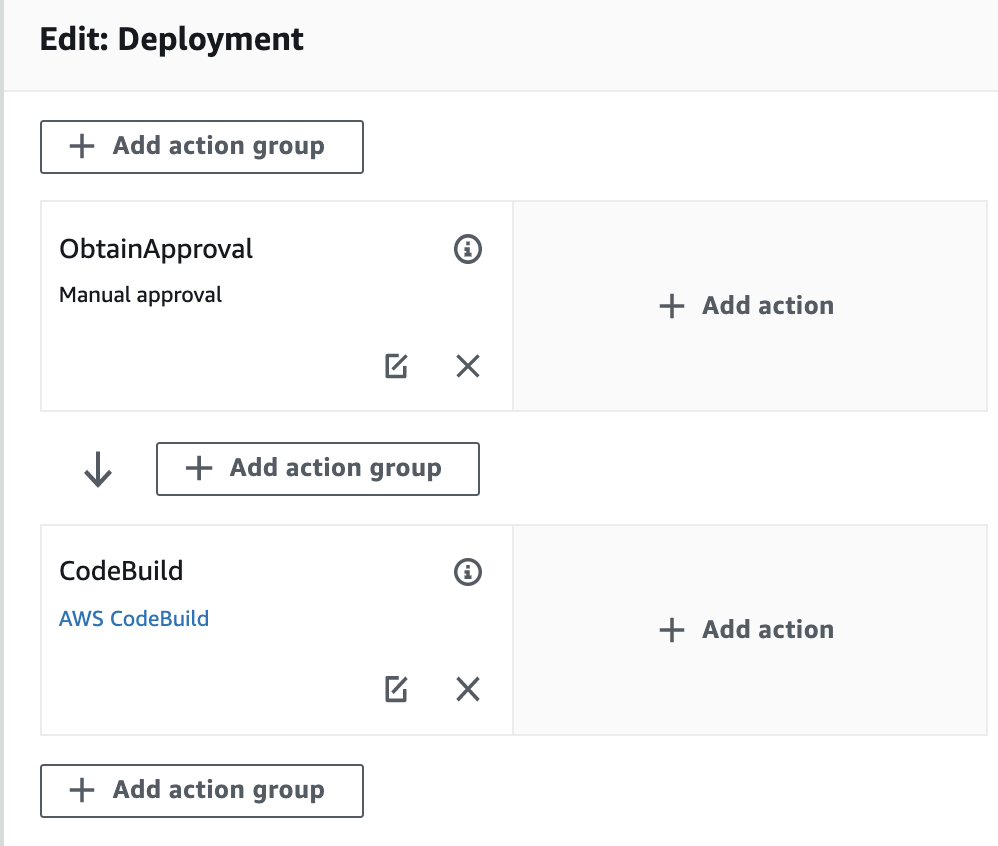Failed To Solve With Frontend Dockerfile.V0
1. Understanding the problem: Exploring the challenges faced with frontend Dockerfile.v0
Docker has revolutionized software development by providing a lightweight and portable solution for packaging applications into containers. While it is widely used in backend development, Docker is also gaining popularity in frontend development. Dockerfile.v0 is an essential component in containerizing frontend applications. However, developers face various challenges while working with Dockerfile.v0 and encounter failed attempts in solving them.
The importance of Docker in frontend development cannot be overstated. Docker allows developers to create reproducible development environments, ensuring that applications run consistently across different machines and platforms. It also simplifies collaboration between team members by providing a standardized environment for development and testing. Dockerfile.v0 is the configuration file used to define the build process and dependencies required for containerizing frontend applications.
Identifying common issues and obstacles encountered while working with frontend Dockerfile.v0 is crucial for effectively troubleshooting and resolving failures. Some of these challenges include:
– Lack of proper configuration and dependencies in the Dockerfile: If the necessary configuration settings and dependencies are not properly defined in the Dockerfile, it can lead to failed builds. It is essential to accurately specify the base image, install the required packages, and set up the correct environment variables.
– Incompatibility issues between the frontend application and Docker environment: Differences in the operating system, libraries, or runtime between the development environment and the Docker container can cause failures. Ensuring compatibility between the frontend application and the Docker environment is crucial for successful containerization.
– Problems with networking and exposed ports: Sometimes, Docker containers fail to communicate with other services or systems due to networking issues. Incorrectly exposing or mapping ports can also lead to failures. It is important to configure networking properly and ensure that the necessary ports are exposed or mapped correctly for frontend applications.
– Insufficient knowledge of Docker best practices for frontend projects: Docker offers various best practices and guidelines for frontend projects that can help prevent failures. Lack of knowledge and understanding of these practices can lead to unsuccessful attempts with Dockerfile.v0. It is essential to familiarize oneself with Docker best practices to ensure success in frontend containerization.
2. Common reasons for failure: Analyzing the root causes of failed attempts with frontend Dockerfile.v0
Understanding the common reasons behind failed attempts with frontend Dockerfile.v0 is crucial for effective troubleshooting. Some of the common root causes of failures include:
– Lack of proper configuration and dependencies in the Dockerfile: Failing to accurately specify the base image, installing the required packages, or setting up environment variables can lead to build failures. It is essential to carefully define and configure the Dockerfile to ensure successful containerization.
– Incompatibility issues between the frontend application and Docker environment: Differences in the operating system, libraries, or runtime versions can cause compatibility issues between the frontend application and the Docker environment. It is important to ensure compatibility by choosing the appropriate base image and configuring the Dockerfile accordingly.
– Problems with networking and exposed ports: Networking issues can arise when containers are unable to communicate with other services or systems. Incorrectly exposing or mapping ports can also lead to failures. Proper networking configuration and correct port mapping are essential for successful frontend containerization.
– Insufficient knowledge of Docker best practices for frontend projects: Lack of familiarity with Docker best practices specific to frontend projects can result in failed attempts. Following best practices such as utilizing multi-stage builds, implementing a clean and minimalistic Dockerfile approach, and managing dependencies effectively are crucial for preventing failures.
3. Troubleshooting strategies: Exploring effective approaches to resolve frontend Dockerfile.v0 failures
To effectively troubleshoot and resolve failed attempts with frontend Dockerfile.v0, developers can adopt the following troubleshooting strategies:
– Verifying the correctness of Dockerfile syntax and structure: Ensuring that the Dockerfile has the correct syntax, proper formatting, and follows the required structure is essential. Any syntax errors can cause failed builds. Tools like Dockerfile Linter can be used to validate the syntax and structure.
– Ensuring the availability and compatibility of required dependencies: Verifying that the necessary dependencies are available, properly installed, and compatible with the Docker environment is crucial. Properly managing dependencies using package managers like npm or yarn can help prevent failures.
– Troubleshooting networking issues and resolving port conflicts: Investigating and resolving networking issues that prevent containerized frontend applications from communicating with other services or systems is important. This can involve debugging network configurations, ensuring firewall rules allow necessary connections, or resolving port conflicts.
– Optimizing Dockerfile settings for improved performance: Analyzing the build process and optimizing Dockerfile settings can help improve performance and prevent failures. Techniques such as utilizing build cache efficiently, removing unnecessary steps, and optimizing layering can help speed up builds and reduce the likelihood of failures.
4. Debugging failed builds: Techniques for troubleshooting and diagnosing failed frontend Dockerfile.v0 builds
When faced with failed builds in frontend Dockerfile.v0, developers can employ various techniques to troubleshoot and diagnose the issues:
– Analyzing error logs and understanding common error messages: Scrutinizing the error logs generated during the build process can provide valuable insights into the cause of failures. Understanding common error messages related to Dockerfile.v0 failures can help in identifying and resolving the issues effectively.
– Using Docker build cache efficiently to speed up the debugging process: Docker build cache allows reusing previously built layers, which can significantly speed up the build process during debugging. Utilizing the build cache effectively and selectively invalidating cache when necessary can be helpful in quickly identifying and resolving issues.
– Employing tools like Docker inspect and Docker logs to gather valuable information: Docker provides useful tools like Docker inspect and Docker logs to gather information about containers, including environment variables, network configurations, and logs. These tools can help in troubleshooting and diagnosing failed builds.
– Debugging techniques to identify and resolve issues specific to frontend Dockerfile.v0: Using debugging techniques specific to frontend Dockerfile.v0, such as running containers in interactive mode, accessing container shells, and logging container output, can aid in identifying and resolving failures effectively.
5. Best practices for frontend Dockerfile.v0: Guidelines to prevent failures and improve productivity
Adhering to best practices for frontend Dockerfile.v0 can help prevent failures and improve productivity. Some of the recommended practices include:
– Utilizing multi-stage builds to optimize Docker image size and performance: Using multi-stage builds allows developers to separate the build environment from the runtime environment, resulting in smaller and more efficient Docker images.
– Implementing a clean and minimalistic Dockerfile approach for better maintainability: Keeping the Dockerfile clean and minimalistic by removing unnecessary dependencies and commands helps in reducing complexity and improving maintainability.
– Managing dependencies and using package managers effectively within Dockerfile.v0: Properly managing frontend dependencies using package managers like npm or yarn within the Dockerfile is essential. This ensures that the required dependencies are installed correctly and consistently.
– Incorporating automated testing in the Dockerfile to catch errors early on: Including automated testing steps within the Dockerfile helps catch errors and issues in the frontend application during the build process itself. This ensures that potential failures are identified and resolved early on.
6. Resources and community support: Exploring helpful resources and communities for dealing with frontend Dockerfile.v0 failures
Dealing with frontend Dockerfile.v0 failures can be easier with access to relevant resources and community support. Some useful resources and communities include:
– Online forums and discussion boards: Participating in online forums and discussion boards related to Docker and frontend development can provide valuable assistance and allow for sharing experiences and knowledge.
– Relevant documentation and tutorials on Docker for frontend development: Seeking out official Docker documentation and tutorials specific to frontend development can provide guidance and insights on best practices, troubleshooting, and resolving failures.
– Open-source projects and repositories providing Dockerfile.v0 examples for reference: Exploring open-source projects and repositories that provide Dockerfile.v0 examples specific to frontend development can be helpful in understanding and implementing successful containerization strategies.
– Networking with professionals and attending Docker meetups: Networking with professionals in the field of frontend development and Docker through meetups and conferences can offer valuable insights and guidance. Attending Docker meetups allows for interaction with experts and learning from their experiences.
In conclusion, failed attempts with frontend Dockerfile.v0 can be frustrating, but with a thorough understanding of the challenges and effective troubleshooting strategies, developers can overcome these obstacles. By adhering to best practices, familiarizing themselves with Dockerfile.v0 syntax and structure, and seeking support from relevant resources and communities, developers can enhance their productivity and successfully containerize frontend applications.
Failed To Solve With Frontend Dockerfile.V0: Failed To Create Llb Definition: The Dockerfile Cannot
Keywords searched by users: failed to solve with frontend dockerfile.v0
Categories: Top 89 Failed To Solve With Frontend Dockerfile.V0
See more here: nhanvietluanvan.com
Images related to the topic failed to solve with frontend dockerfile.v0

Found 34 images related to failed to solve with frontend dockerfile.v0 theme



















![ERROR [internal] load remote build context, ERRO[0003] Can't add file - Fly.io Error [Internal] Load Remote Build Context, Erro[0003] Can'T Add File - Fly.Io](https://global.discourse-cdn.com/business7/uploads/fly1/optimized/2X/c/c7e0d87c729e396726c0cd33bacf059bbced6ff8_2_690x312.png)













Article link: failed to solve with frontend dockerfile.v0.
Learn more about the topic failed to solve with frontend dockerfile.v0.
- An error, “failed to solve with frontend dockerfile.v0”
- How to fix failed to solve with frontend dockerfile.v0 error when …
- failed to solve with frontend dockerfile.v0 – Dot Net For All
- failed to solve with frontend dockerfile.v0 no such file or directory
- rpc error: code = Unknown desc = failed to solve with frontend …
- Failed To Solve With Frontend Dockerfile V0: Debugged
- failed to create LLB definition: the Dockerfile cannot be empty …
See more: nhanvietluanvan.com/luat-hoc